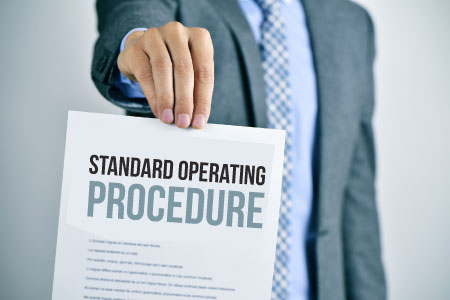Submitting Abbreviated New Drug Applications (ANDA), especially now, is no straightforward matter. The U.S. Food and Drug Administration (FDA) just released new Generic Drug User Fee Amendments (GDUFA) guidance and yet ANDA submitters are still encountering plenty of ambiguity—even while the FDA is cracking down on unsatisfactory ANDA submissions.
The key to applicants’ success in this climate, says regulatory expert Charles H. Paul, is to understand how and which ANDA or PAS (Prior Approval Supplements) deficiencies can lead to a major amendment request from the FDA. Paul covers GDUFA issues—including the FDA’s latest goals for amendments under the newly released GDUFA II, in the ProfEdOnDemand webinar, “ANDA Submission and GDUFA Final Guidance.”
Prep for a new, somewhat friendlier fee structure
Back in August, Donald Trump signed the FDA Reauthorization Act, which reauthorized GDUFA through September 2022—otherwise now known as GDUFA II. The act extends user fee programs for generic drugs, prescription drugs, biosimilars, and medical devices and also amends agency roles related to medical products, noted the White House in a press release.
GDUFA II introduces program fees, eliminates supplement fees, and adjusts fees for small businesses. Specifically, the FDA noted these changes:
- Firms that sponsor one of more approved ANDAs will pay an annual fee.
- The PAS fee was eliminated because its revenue was unpredictable.
- No facility or ANDA sponsor will be charged an annual fee until an ANDA in which is it listed is approved.
- Firms will pay one program fee commensurate with the number of approved ANDAs that the firm and its affiliates collectively own.
- Contract manufacturing organizations will pay one-third the annual fee paid by firms that manufacture under ANDA.
Other technical changes include:
- State or federal entities that sponsor or manufacture drugs but do not distribute them commercially won’t be assessed user fees.
- Sponsors will get a partial refund if they withdraw an ANDA voluntarily before the FDA decides whether the ANDA can be received.
- There is just one fee per facility; formerly, a facility which qualified as both API and FDF would pay both fees.
- The foreign fee differential has been standardized at $15,000 per facility.
Expect more RTF letters in the mail
Now is not the time to get lax with your ANDA submissions. Thanks to tight deadlines—and a growing number of applications for new drug, generics, and medical device applications—the FDA has no patience for your less-than-satisfactory ANDA submissions, notes Applied Clinical Trials Online.
Beware: “FDA is rejecting submissions that are incomplete or unsatisfactory right from the start,” Applied Clinical Trails Online explained. “Review staffers are refusing to file (or receive or accept) applications until the sponsor provides all data and information needed to conduct more one-cycle reviews. With the rise in breakthrough drugs and treatments for rare conditions that qualify for accelerated or priority reviews, the agency has become more rigorous in scrutinizing applications for completeness before starting a formal assessment.”
That means that the agency is mailing more refusal-to-file (RTF) letters to sponsors—not all of which are publicly disclosed for fear of impact to the firm. The FDA said that it issued more than 70 RTF letters between 2010 and 2017, but less than half were publicly acknowledged.
With lots going on at the FDA for drug submissions, says Paul, now is the time to fully acquaint yourself with FDA guidance for new ANDA submissions.

